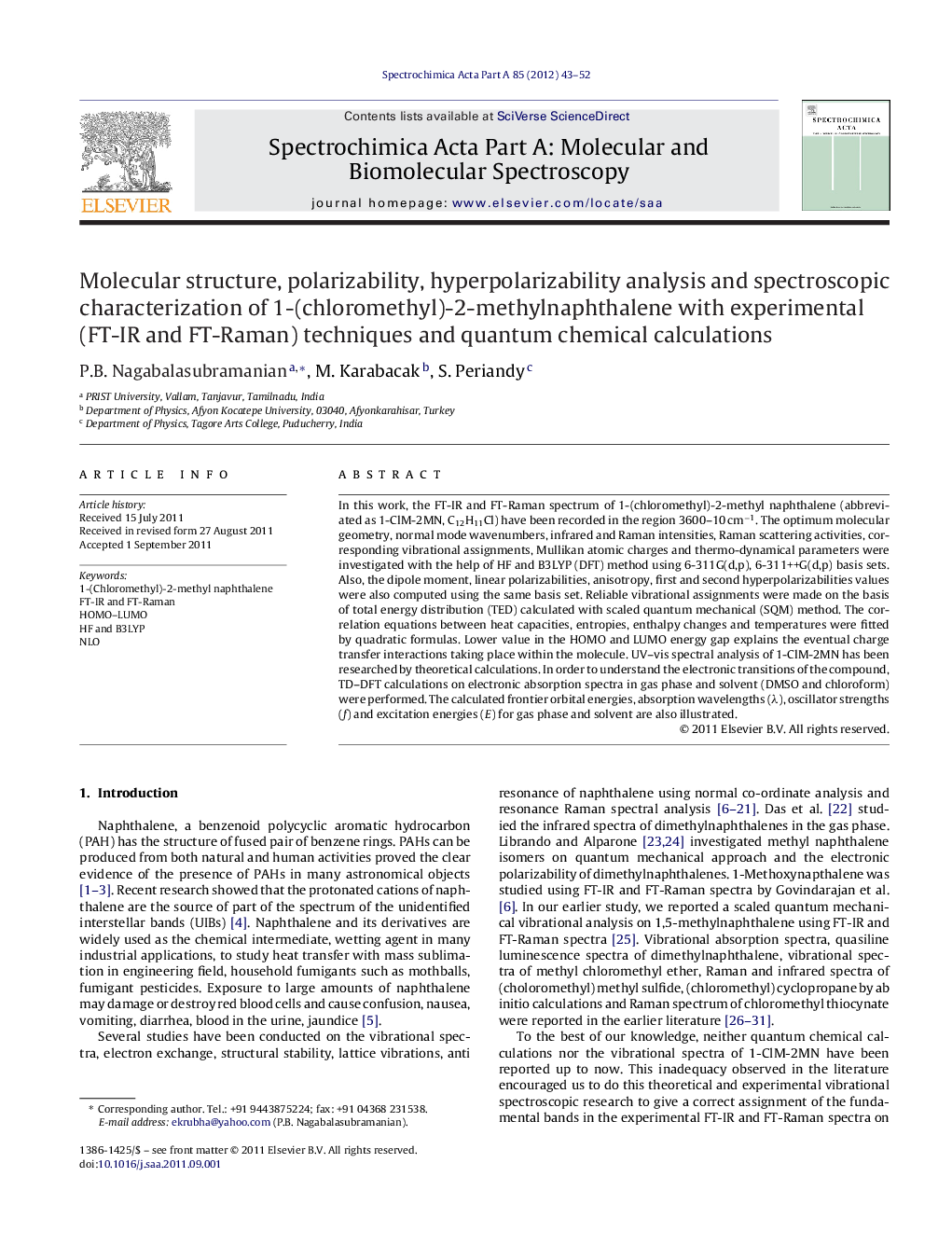| Article ID | Journal | Published Year | Pages | File Type |
|---|---|---|---|---|
| 1236064 | Spectrochimica Acta Part A: Molecular and Biomolecular Spectroscopy | 2012 | 10 Pages |
In this work, the FT-IR and FT-Raman spectrum of 1-(chloromethyl)-2-methyl naphthalene (abbreviated as 1-ClM-2MN, C12H11Cl) have been recorded in the region 3600–10 cm−1. The optimum molecular geometry, normal mode wavenumbers, infrared and Raman intensities, Raman scattering activities, corresponding vibrational assignments, Mullikan atomic charges and thermo-dynamical parameters were investigated with the help of HF and B3LYP (DFT) method using 6-311G(d,p), 6-311++G(d,p) basis sets. Also, the dipole moment, linear polarizabilities, anisotropy, first and second hyperpolarizabilities values were also computed using the same basis set. Reliable vibrational assignments were made on the basis of total energy distribution (TED) calculated with scaled quantum mechanical (SQM) method. The correlation equations between heat capacities, entropies, enthalpy changes and temperatures were fitted by quadratic formulas. Lower value in the HOMO and LUMO energy gap explains the eventual charge transfer interactions taking place within the molecule. UV–vis spectral analysis of 1-ClM-2MN has been researched by theoretical calculations. In order to understand the electronic transitions of the compound, TD–DFT calculations on electronic absorption spectra in gas phase and solvent (DMSO and chloroform) were performed. The calculated frontier orbital energies, absorption wavelengths (λ), oscillator strengths (f) and excitation energies (E) for gas phase and solvent are also illustrated.
Graphical abstractFigure optionsDownload full-size imageDownload as PowerPoint slideHighlights► Geometry and frequencies of 1-(chloromethyl)-2-methylnaphthalne were calculated. ► The calculated DFT/B3LYP results were compared with both FT-IR and FT-Raman data. ► The thermodynamic properties at different temperatures were calculated and interpreted. ► The electronic properties were performed by TD–DFT approach for different solvents.
